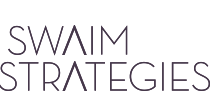Guest Post: 3 Ways Your Organization Can Conduct Prospect Research
By Ryan Woroniecki
Donors respond to stories. Donors respond to personal connection. Donors respond to fundraisers who know them.
Whether you are searching for the right appeal speaker to resonate with major donors at your annual gala or debating how much a suggested ask of a prospect should be, a solid understanding of your donors — their histories, finances, families, interests, etc. — needs to drive your choices and actions.
An informed fundraiser is a successful fundraiser.
What’s the best method of gathering donor information? Two words, prospect research.
Nonprofits, educational institutions, and other fundraising organizations use prospect research to determine both the giving capacities and giving affinities of prospects and donors.
Factors like real estate ownership, FEC charitable contributions, and past charitable giving can indicate the likelihood that any given person will donate. Additionally, the analysis of any of these findings can even help organizations gauge how much a prospect should be asked to donate.
If you can learn those predictive details about your donors and prospects, your nonprofit will be in a strong position to make accurate asks that your constituents respond positively to.
Are you intrigued by the prospect research possibilities? Ready to begin research yesterday?
There are three main ways that organizations go about performing prospect research.
You’ll find the methods detailed below.
#1: Hire a Prospect Screening Company
Prospect screening companies, like DonorSearch, do the work of researching and analyzing the information for you.
A screening company will be able to study and compare your prospects and donors against a collection of databases. The databases house a variety of public and sometimes private information and feature details that can reveal how high-quality a prospect is. Beyond major gift donors, a screening can uncover a variety of candidates, even the sometimes difficult to predict planned giving prospects.
By hiring a prospect research company, your staff will have to do minimal work. Your nonprofit provides the prospect and donor list and upon completion of the research, receives comprehensive profiles of those on the list. From there, your staff can adjust its fundraising strategy accordingly.
For example, your nonprofit may be planning an acquisition event to cultivate new donors. Your staff is trying to put together the optimal guest list of prospects. With a screening of those candidates, your ideal guest list will practically write itself.
The services of a prospect screening company can even be used alongside either of the two strategies that I am about to discuss. When looking into to research companies, your decision will be influenced by a combination of what your organization wants to screen for, how in-depth you want the information provided by the research to be, and the how the screening services will fit in with your current prospect research techniques.
#2: Bring in Prospect Research Consultants
Prospect research consultants are a great option for use over a fixed period. The consultants you bring in are often former prospect researchers themselves, and they’ll have no shortage of real world, nonprofit sector experience to employ in assisting your organization.
With consultants, you can hire them for a set time to help with a wide range of prospect research needs. They can screen new prospects or current donors or both. The choice is yours.
Additionally, and perhaps most usefully, consultants can educate your staff about prospect research so that your nonprofit is set to carry on after the consulting period has concluded.
You can also bring in consultants on an as-needed basis. For instance, if your organization wants to perform screenings once a year, you can hire the consultants on an annually recurring schedule.
#3: Have Staff Take on the Responsibility
Once you learn about prospect research, most people are tempted to just have staff take on the task. This “DIY” style works to an extent, but has its limitations.
In theory, this is the most cost-effective option. With a partner in the internet, a nonprofit professional can complete a certain level of research. There are plenty of publicly accessible resources available to interested parties. From Facebook to Zillow to LinkedIn, if you want to keep your efforts in-house, you will be able to do some prospect screening.
Keep in mind though, there are a few challenges associated with this method. For one, this is going to take a lot of time and energy — time and energy most development staff members cannot spare. The other in-house option is hiring a prospect researcher specifically, or even a team. Of course, that option comes with its own financial costs.
If you do go the “DIY” route, make sure your researchers are equipped with all the necessary tools to properly research and analyze your prospects.
Sometimes a combination of the above options is the best fit.
For instance, let’s take a major university. This example university has multiple prospect researchers on staff. To supplement the efforts of their researchers, the university also subscribes to the services of a screening company. If your organization is going to wholly embrace prospect research, it may want to consider the dual method approach.
Prospect research is valuable for a variety of reasons no matter what fundraising event your nonprofit chooses.
Your organization could be making a push for matching gifts and need to gather employer information, or your team could be looking for major gift candidates in your annual fund. In both, and many, instances, prospect research will help. Choose the method that best suits your organization’s needs and start researching soon.
Ryan Woroniecki is the Vice President of Strategic Partnerships at DonorSearch, a prospect research, screening and analytics company that focuses on proven philanthropy. He has worked with hundreds of nonprofits and is a member of APRA-MD. When he isn’t working, he is an avid kickball player.







